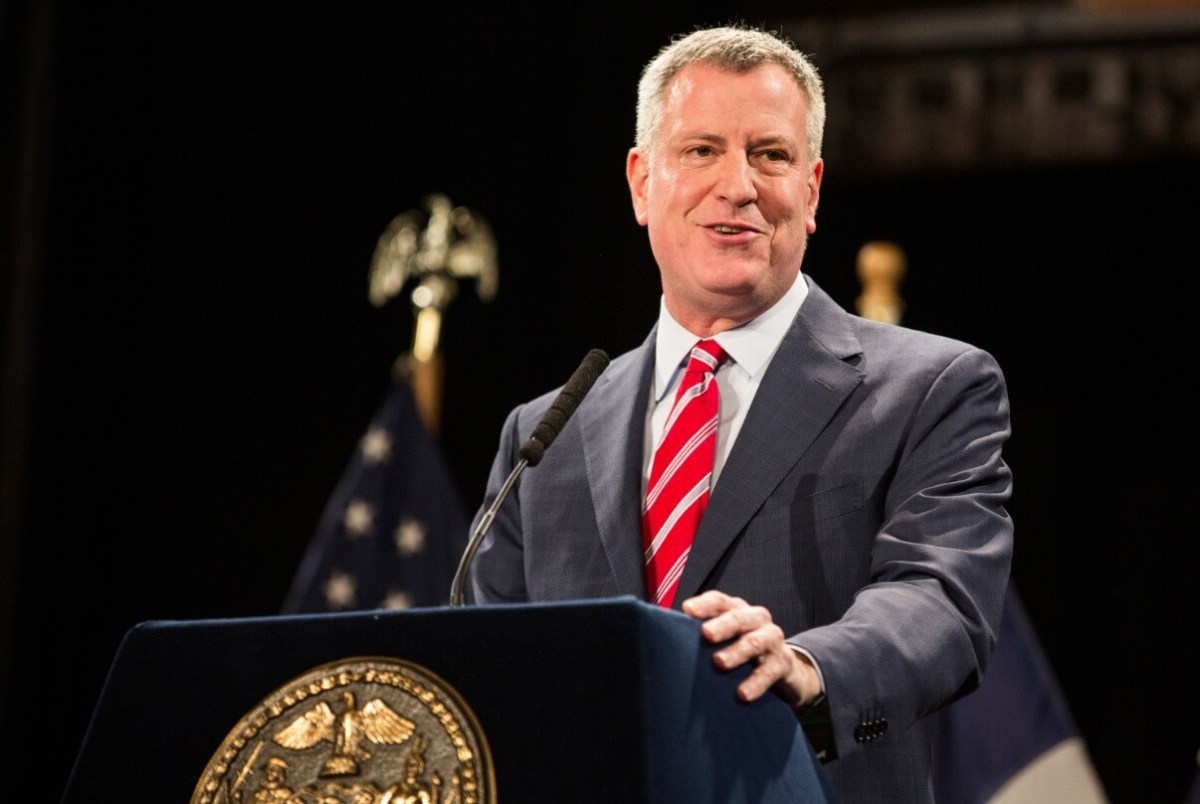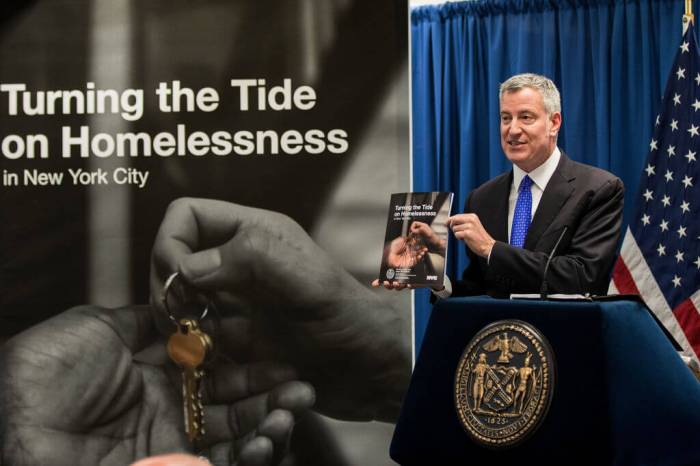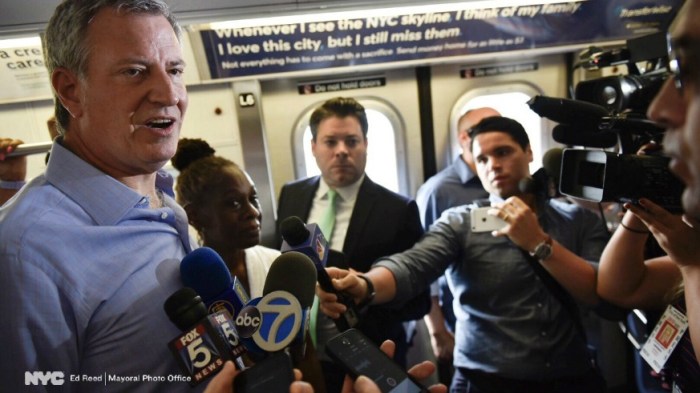Mayor Bill de Blasio’s trope of the tale of two cities was alive during his second State of the City address on Tuesday.
In his address, de Blasio outlined his plan to increase affordable housing for low and middle income New Yorkers as a way to combat economic inequality.
“If we do not act, and act boldly, New York risks taking on the qualities of a gated community,” de Blasio said. “We cannot let that happen, we will not let that happen.”
The mayor was introduced by lifelong Fort Greene resident Sheryl Morse, who said she was afraid of being priced out of her longtime low-income co-op where numerous other members of her family live. Morse said the building reached out to the city for funding, and the mayor and his administration delivered more than $3 million in funding for building repairs, including replacing windows, repairing elevators and boilers and removing asbestos. “While the state of our city is strong we face profound challenges, if we fail to be a city for everyone we risk losing what makes New York New York, we risk losing the very soul of this place,” de Blasio said, speaking on the “soaring” cost of housing and the nearly 60 percent of city residents who are “rent burdened,” paying more than 30 percent of their income on housing. Among the key pledges de Blasio made during the speech were a new housing policy that would require all new housing built under rezoning in six neighborhoods — East New York, Long Island City, Jerome Avenue in the Bronx, Bay Street in Staten Island and East Harlem — to include affordable units. The city is planning to invest $200 million in affordable housing in the lower Grand Concourse area of the south Bronx, and de Blasio said the city is committed to ending homelessness for the city’s 1,000 veterans in 2015. More affordable housing will be available to seniors, and the city will provide 1,500 living and working spaces for low income artists. With housing reclaiming more of the city’s decayed industrial waterfront, the mayor said the city will have a five borough ferry system in place by 2017 that will cost commuters the equivalent of a MetroCard swipe. De Blasio said the city is developing 13 new rapid transit bus routes. Looking back at 2014, de Blasio called it a year of “great progress” that introduced Vision Zero and universal pre-K, increases in living wages and access to paid sick leave for thousands more New Yorkers. The mayor said crime was at an historic low last year, with the lowest number of reported murders, robberies and burglaries. The mayor also said a new marijuana enforcement policy launched in November, in which officers issue summons instead of arrests for low-level possession charges, has led to a 65 percent decline in marijuana arrests. De Blasio, who vowed to reform stop-and-frisk during his mayoral campaign, said the “overuse” of the policy ended last year, and stops are down 75 percent. In 2014, the city created 17,300 affordable units — 11,185 preserved and 6,191 new units — enough to house 42,000 New Yorkers.
Identifying two groups that really need affordable space — seniors and artists — was right on target, said Nancy Biberman, a developer and founder and president of the Women’s Housing and Economic Development Corporation in the South Bronx. When news broke that Bronx Commons, a development set to break ground later this year, would reserve 40 affordable units for older artists, the phone at her office started “ringing off the hook.” Biberman said her company was able to find two vacant affordable units for two older musicians — one who had suffered a stroke and another in a wheelchair. “We know the need is there,” Biberman said. “ Every study and piece of information I’ve gathered says people stay alive emotionally and mentally when they continue to retain their identities.”
De Blasio outlines housing plan in state of the city address

Andrew Burton, Getty Images























